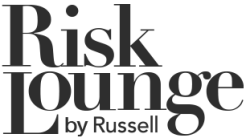
Despite China experiencing one of its worst seasons of flooding in 2010 since the Yangtze River floods of 1998, low insurance penetration has limited the impact on the insurance market.
A new report by reinsurance intermediary Guy Carpenter into the floods found that while the economic losses from its flood-related disasters are significant, the impact on the insurance industry is likely to be limited due to low insurance penetration levels in China.
“While China is exposed to virtually every type of natural disaster, earthquake, typhoon and flood have had the most devastating impact, with flood being the most frequently occurring peril,” said David Lightfoot, Guy Carpenter’s Managing Director, Head of GC Analytics - Asia Pacific. “Our report seeks to provide a clearer understanding of the 2010 flood season, possible contributing factors and the growing role of re/insurance to mitigate the financial impact of catastrophes.”
Triggered by an unusually severe monsoon season, China experienced record-high water levels at 25 rivers in the summer of 2010, resulting in massive flooding that caused an aggregate estimated economic loss amount of approximately 350 billion Yuan, or $52 billion.
The report found that while the estimate for total insured losses is still being developed, the insured loss will likely only amount to 1 percent to 2 percent of the total economic losses stemming from the floods, due to low insurance penetration levels. Indeed, although varying from treaty to treaty, the impact on the majority of non-marine proportional reinsurance treaties is expected to be limited.
Lawrence Liao, Guy Carpenter’s CEO of Mainland China and Hong Kong,added: “At Guy Carpenter, one of our chief priorities is to address the risk and reinsurance needs of China’s fast-growing insurance marketplace. With our newly granted license to operate as a full-service provider in China, we can continue our focus on helping clients analyze increasingly complex risk exposures and develop creative solutions for managing them.”





